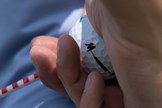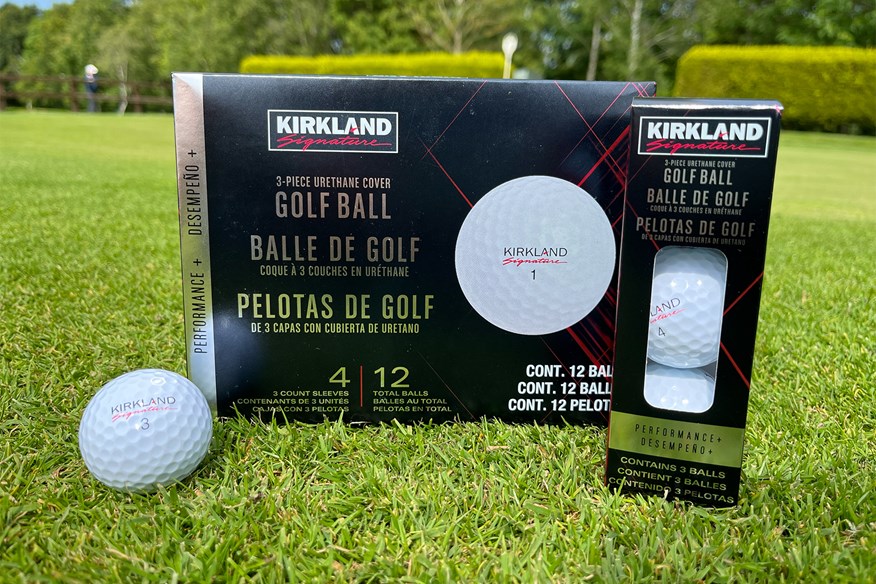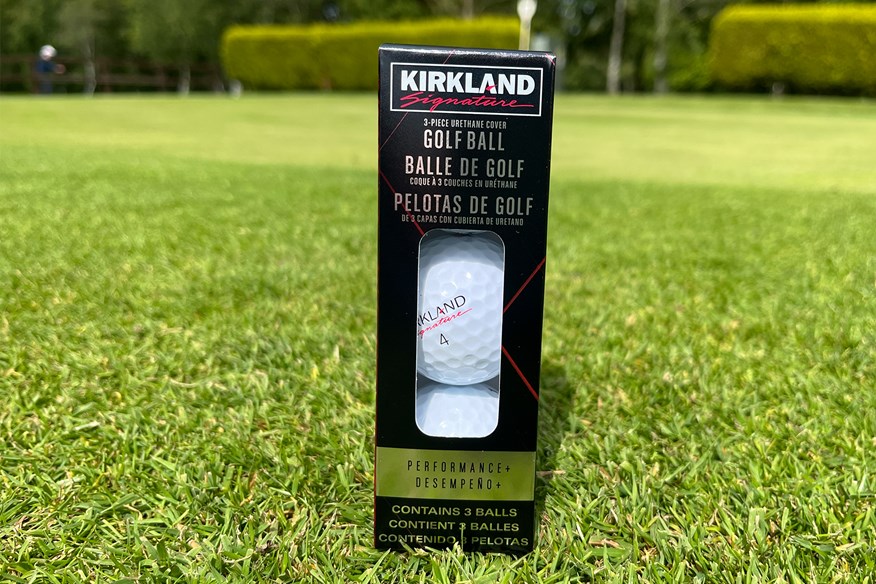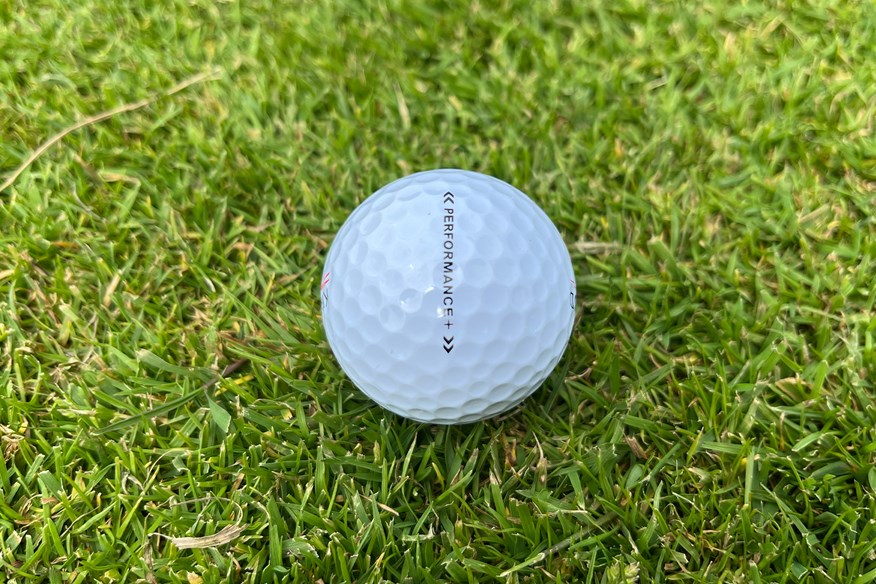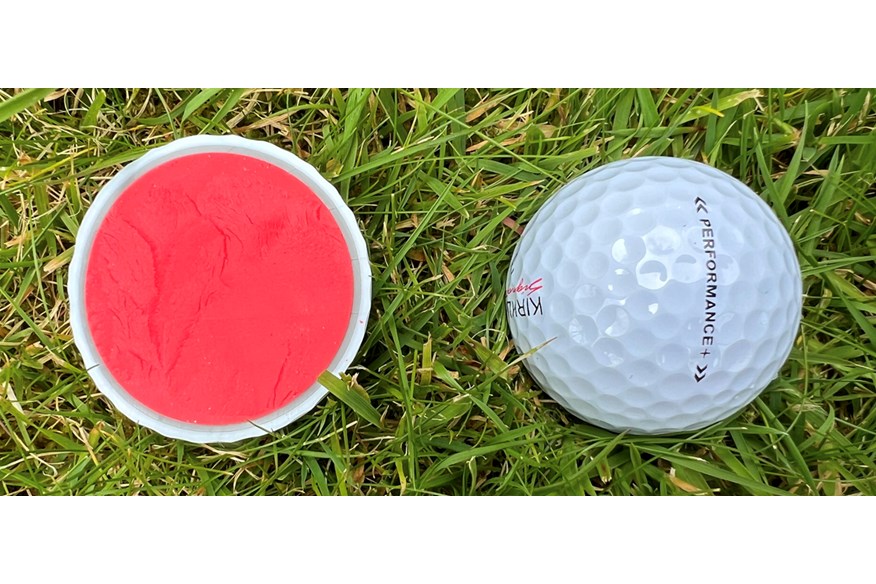This golf ball spins more than a Titleist Pro V1 and costs 1/3 of the price!
Last updated:
The Today’s Golfer robot test revealed a bargain golf ball that offers performance way beyond its price point.
The main thing that stops people using the best golf balls available is price. Premium balls cost around $55 per dozen, which gets pretty expensive if you tend to lose a few during each round or – speaking from bitter experience – butcher some with knifed bunker shots. Waving farewell to a brand new ball as it sails into a water hazard or someone’s back garden is all the more painful when you realize that brave, short-lived, dimpled little soldier cost more than $4.50 a pop.
But what if I told you that you can get a urethane-covered ball that spins more than a Titleist Pro V1… for less than a third of the price?
- Titleist Pro V1 drops to lowest-ever price in Black Friday sales
- Best Black Friday 2024 Golf Ball Deals
(This article isn’t an attack on the Pro V1, by the way. Other premium balls like the TaylorMade TP5 and Callaway Chrome Tour cost a similar amount and promise similar performance. The Pro V1 is just the standard benchmark for golf ball performance because it’s the number one ball in golf by a mile.)
Our recent robot golf ball test produced some fascinating results, and I want to highlight a budget golf ball whose performance caught my attention. We’ll look at:
- How much money it could save you based on how often you play and how many balls you go through
- How it performs with a pitching wedge, 7-iron, and driver compared to the Titleist Pro V1, Pro V1x, and other premium golf balls
- Whether I’d recommend it over a Titleist Pro V1 or other premium ball
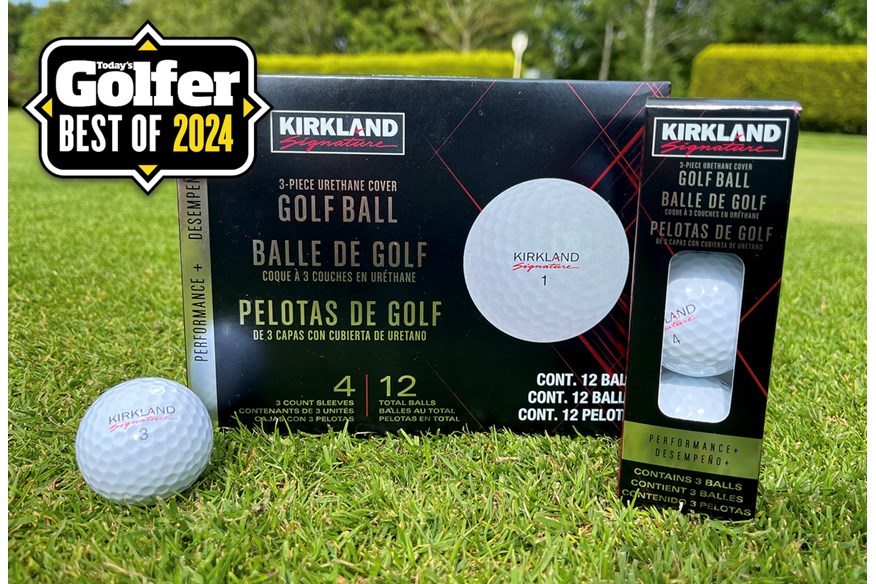
Kirkland Signature V3 – the savings
The Kirkland Signature V3 golf ball was originally only available from Costco and you needed a Costco membership costing $65 a year to buy them, but nowadays you can sometimes find them online from other retailers and occasionally even cheaper than at Costco.
With an RRP of $34.99 for two dozen (yep, two dozen), the Kirkland Signature works out at just under $1.46 per ball. Compare that to $4.58 per ball for a Pro V1 and you can see how quickly the savings add up.
Feeling too lazy for arithmetic? I’ll show you.
If you play golf three times a week and lose three balls per round, you would save $1,460.16 across the course of a year by playing the Kirkland Signature V3 instead of the Titleist Pro V1. That’s enough for a golf holiday or a new set of irons.
Even if you don’t play that much or just don’t lose as many balls, going through three balls per week would still mount up to an annual saving of $486.72.
But what are you giving up in terms of performance in exchange for so much extra cash in your pocket?
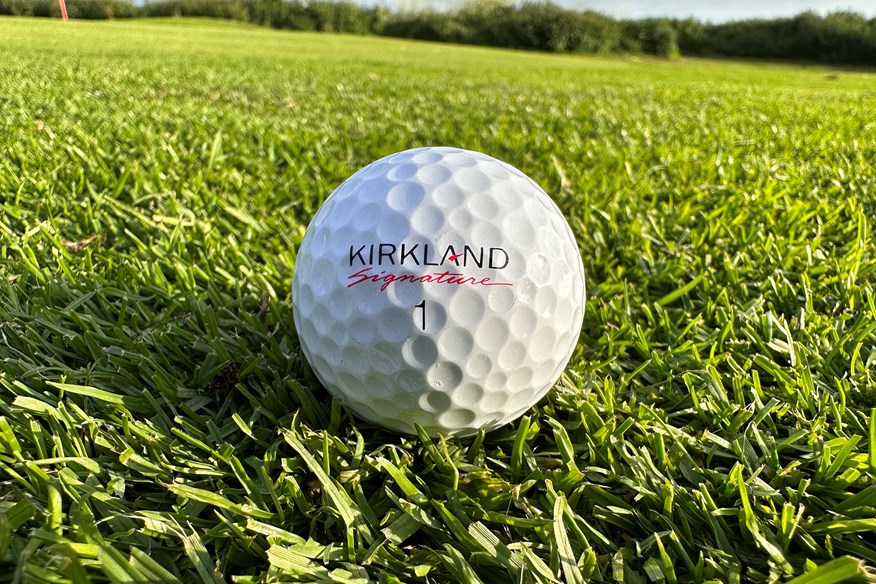
Pitching wedge performance
The Kirkland Signature V3 generated 8,043 RPM of spin with a pitching wedge, ranking it third in the entire test, narrowly behind the Callaway Chrome Tour X (8,080 RPM) and Titleist Pro V1x (8,046 RPM). It generated 352 RPM more spin than the Titleist Pro V1.
The carry distance was 0.9 yards shorter than the Pro V1x and 0.6 yards shorter than the Pro V1, but an extra smidge of carry distance with a pitching wedge would never factor into my decision of what golf ball to use.
The descent angle was slightly shallower than the Pro V1 and Pro V1x, but only by 0.8° and 0.4° respectively, so the Kirkland would hold greens as well as any ball out there.
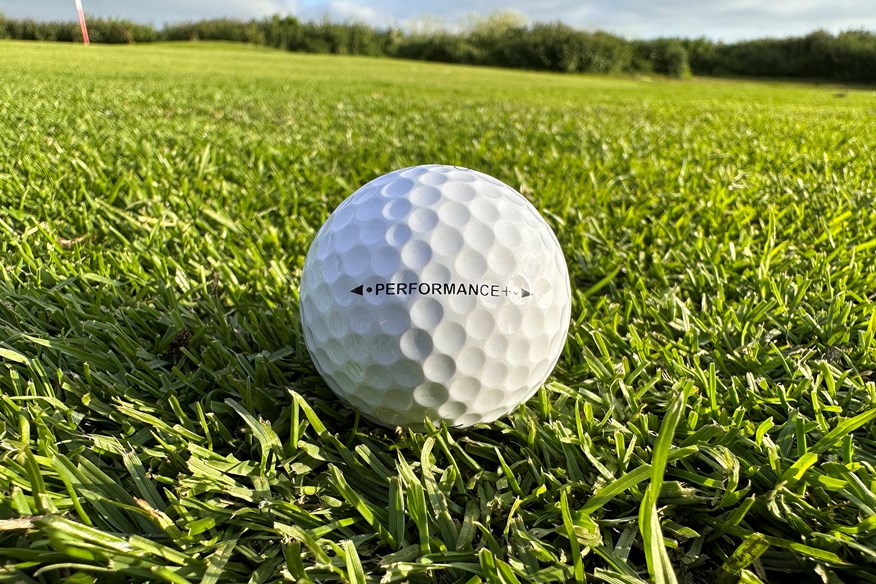
7-iron performance
The Kirkland Signature V3 generated 6,109 RPM of spin with a 7-iron, again ranking it third of all the balls on test – this time behind the Callaway Chrome Tour X (6,193 RPM) and Wilson Staff Model X (6,084 RPM).
For comparison, the Titleist Pro V1 generated 5,594 RPM of spin and the Pro V1x generated 5,835 RPM.
Again, the Kirkland had a slightly lower launch and descent angle, but both within 1° of the Titleist balls.
Carry distance was also down, with the Kirkland carrying 147.8 yards, the shortest in the entire test by a good few yards. The Pro V1 and Pro V1x carried 152 yards and 151 yards, while the longest 7-iron carry distance was clocked by the Srixon Q-Star Tour at 156.5 yards.
Whether an extra three or four yards of carry distance with a 7-iron justifies paying almost three times as much for a golf ball is a personal call, but what about with the driver – where distance really counts?
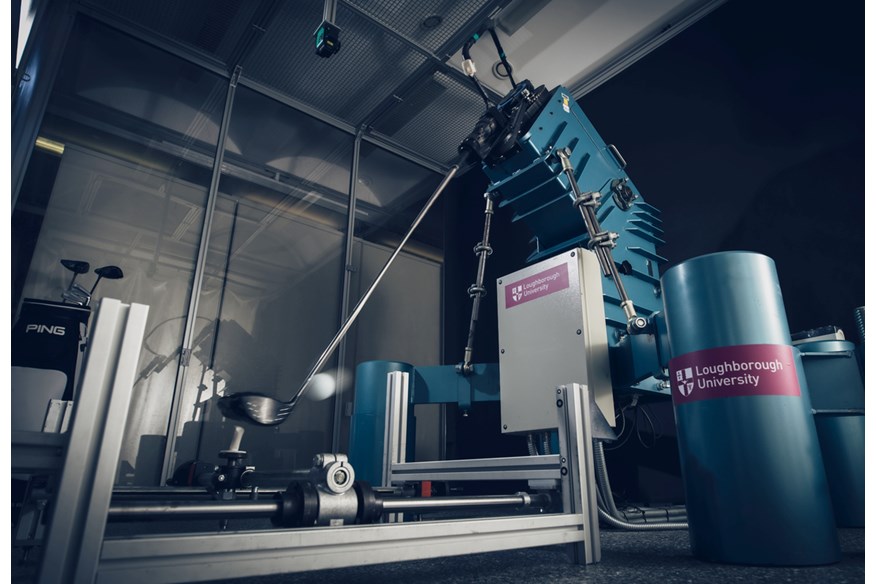
Driver performance
The test included hitting driver at three different swing speeds: 85mph, 100mph, and 115mph.
85mph driver
At the slowest speed, the Kirkland Signature V3 carried 186.9 yards, which is 3.1 yards shorter than the Pro V1x (190 yards) and 4.3 yards shorter than the Pro V1 (191.2 yards).
The reason for the drop-off was extra spin, with the Kirkland spinning at 2,822 RPM, more than any other golf ball in the test. The Pro V1 span at 2,513 RPM and the Pro V1x at 2,646 RPM, while the test average was 2,579 RPM.
The longest carry at this speed came from the Wilson Staff Model at 193.6 yards, while the shortest was the Srixon AD333 at 185 yards. The test average across all balls was 189.7 yards, so you can see that the Kirkland did underperform in this department, although the difference isn’t huge.
100mph driver
At 100 miles per hour, the Kirkland Signature V3 carried 238.9 yards, a loss of 0.9 yards against the Pro V1 (239.8 yards) and 1.7 yards against the Pro V1x (240.6 yards).
The reason was the extra spin, with the Kirkland spinning at 2,806 RPM compared to 2,519 and 2,539 for the Pro V1 and Pro V1x, with a test average of 2,546 RPM.
115mph driver
At our highest test speed, the Kirkland carried 276.6 yards, compared to 278.1 for the Pro V1 and 277.9 for the Pro V1x, and short of the 277.8-yard test average.
Again it was the extra spin that cost the Kirkland distance, with 2,296 RPM compared to 2,066 and 2,048 for the Pro V1 and Pro V1x.
If you’re swinging over 100 miles per hour, is a yard or two of carry distance enough to warrant such a hefty price premium? That’s up to you. For me, it’s certainly not. If you’re at the slower end of the spectrum, the difference is bigger but still only three or four yards, which is hardly game-changing.
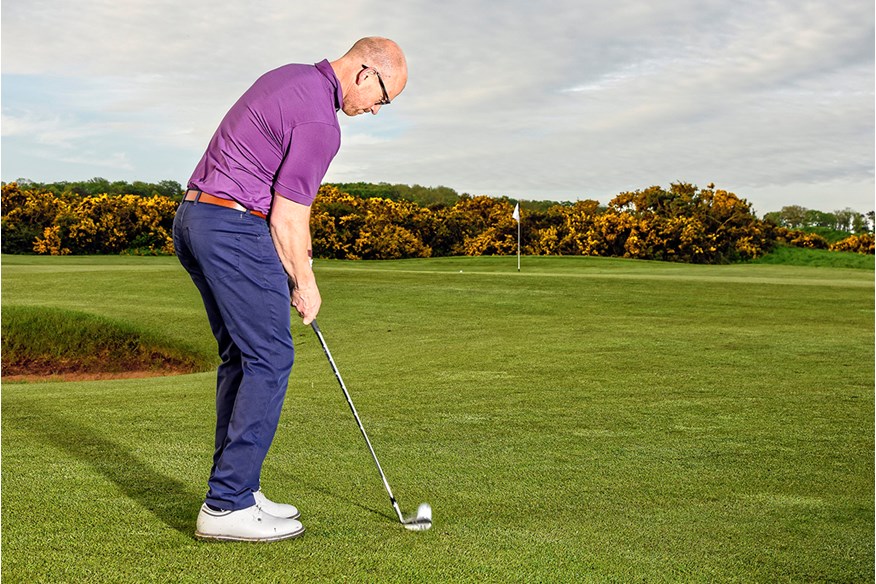
Greenside control
Most cheap golf balls have one major downside, and that’s the absence of a urethane cover. It’s cheaper to cover golf balls in surlyn than urethane, which is why urethane-covered balls typically came at a higher price point. But, in recent years, several brands have released affordable golf balls with urethane covers, including the Kirkland Signature V3.
Why does a urethane cover matter? Urethane is generally associated with a softer feel and greater spin.
Whilst a urethane cover isn’t as important as many people think when it comes to spin on full shots – hence the good spin rates delivered by some surlyn-covered balls in the test – it’s around the green where you really notice the difference.
Although it’s not something measured in our robot test, 25 years of golfing experience tells me that a urethane cover offers much nicer feel and more control on short shots around the green than a surlyn cover. I believe it’s something to do with the softer material staying on the club face fractionally longer and interacting more with the grooves. I don’t know – I’m not a scientist or golf ball engineer – but if I had to hit a spinny chip shot, I’d want a urethane-covered ball every single time.
For several years the Kirkland has been a regular golfer favorite as the lower cost means you don’t have to be too bothered about losing one here and there, yet thanks to the 3-piece construction and urethane cover this model historically has been incredibly high spin.
Our data below shows how the model compares against the latest balls of 2024, highlighting whether or not their low price actually represents a good value-for-money investment for you.
Read our full Kirkland Signature V3.0 golf ball review.
Pros
- A very high spin option
- The cheapest ball option in this entire test and it has a urethane cover
- Shorter but more spinny than a Titleist Pro V1
Cons
- Don't expect optimal carry distance
| Construction | 3-Piece |
| Cover | Urethane |
| Cost per ball | $1.67 |
Should you switch to the Kirkland Signature V3 golf ball?
If value-for-money is important to you, buy the Kirkland Signature V3. The performance is not far off the best balls in golf and it’s less than a third of the price!
But, if you want to eke out every possible ounce of performance regardless of cost, look elsewhere. The Kirkland V3’s spin rate is fantastic, but a couple of other balls spin more. Plus, most balls offer slightly more carry distance than the Kirkland, both with irons and driver. The very best golf balls manage to generate high spin when you want it – with wedges and irons – while keeping spin down with the driver to maximize distance. The Kirkland spins a lot with all clubs, which is great for stopping approach shots but costs you a bit of distance off the tee. And – word of warning – if you already struggle with too much spin on your drives, the Kirkland Signature V3 will exacerbate that and cost you even more distance. If you’re trying to reduce spin, check out our pick of the best low-spin golf balls.
